Today we share with you 5 reasons why you should do the Inca Trail to access Machu Picchu, the most famous pedestrian path in America. A journey along 43 km starting in Piscacucho or km 82 . Stone steps, archaeological remains and unique landscapes will adorn the trek.
There are different roads that lead to Machu Picchu but none can compete with the Inca Trail. This section is part of the Inca road network (Qhapac Ñan in Quechua) which is considered one of the best engineering works of the Inca Empire.
What is Qhapac Ñan?
Literally Qhapac Ñan means “main road”, in this case, it is a sophisticated network of roads established by the Inca Empire (Tahuantinsuyo), which covers more than 30 thousand kilometers that today reaches different countries: Colombia, Ecuador, Peru, Bolivia, Chile and Argentina.
In pre-Columbian and pre-Hispanic America, the Qhapac Ñan was part of a political, military, ideological and administrative project. Many sections have been the basis of modern roads while many others have been preserved as protected heritage by the different states (the Qhapac Ñan was declared a World Heritage Site by UNESCO in 2014). Among all of them the most famous is the 43 km route that leads to Machu Picchu.
The route was mainly built using stone and is very versatile. It adapts to the different territories (coast, mountains, jungle) respecting nature and ecosystems admirably. In some points the Inca Trail joins in transversal sections and in others, they bifurcate. In those cases the Incas built bridges, tunnels, walls, sidewalks, stairways, deposits (colcas) and shelters (tambos).
Undoubtedly its main function was to communicate the city of Cusco – the center of the Inca’s power – with the rest of its domains. And having been built in a time of expansion of the empire, denoted its power and control.
The Inca Trail to Machu Picchu
As we already indicated, the most famous section worldwide is the one that leads to Machu Picchu. At present, this route is under the protection of the Peruvian State, so to access it you must comply with certain rules
The “classic” Inca Trail lasts 4 days and 3 nights and as is evident, it is done on foot. It starts from km 82 to Puerta del Sol (Inti Punku), the entrance to the Inca city Machupicchu . Being under the supervision of the government, it is important that you remember to do this route with an official and formal travel agency such as Colibri Experience. Don’t worry, we take care of all of them: tickets, food, camping, transportation, guidance and much more.
Reasons why you should do the Inca Trail
If so far you have not dared to do the Inca Trail, here are some reasons why you should not miss this wonderful hiking experience.
- Surround yourself with a unique natural setting: Throughout the tour you will be able to appreciate beautiful natural landscapes. Also biodiversity in flora and fauna that will surprise you. Towering snow-capped mountains, cloud forests and tangled jungle are impressive instagrammable references.7
- Tour the Qhapac Ñan: As we have already explained, this important network of Inca trails are accessible to visitors of all nationalities. Dare to travel a route full of thousands of years of history and culture.
- Get to know different archaeological centers: During the tour you will have the opportunity to visit various ancient archaeological complexes and attractions such as Inti Punku, Llactapata, Qoriwayrachina, Paucarcancha, Warmiwañuska, Runkurakay, Sayaqmarka, Phuyupatamarka, Wiñaywayna, Intipata and more.
- Direct access to Machu Picchu: Through the most important path during the Inca times and today, currently being a valuable heritage of humanity.
- Connect with your inner being: The walks have many benefits for the body, both physically, mentally and spiritually. This great moment of disconnection with the daily routine will allow you a moment of peace to calm your mind and focus with your five senses on your surroundings. In addition, of course, the many benefits that Mother Nature grants when coming into contact with her.
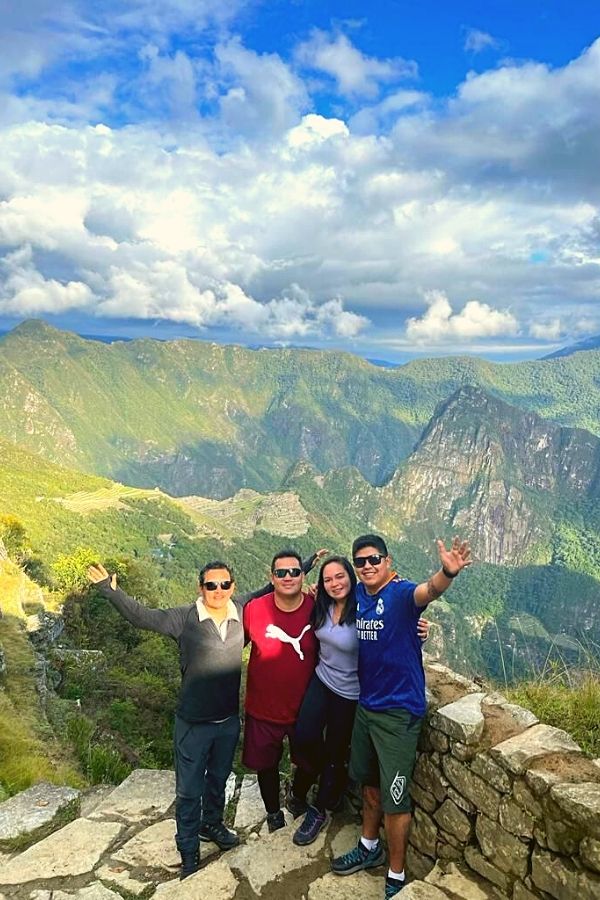 As you have read, there are many reasons why you should do the Inca Trail, whether you go alone, as a couple or with friends or family. On the route you will share adventures with other travelers who are passionate about the cultural and natural wealth of the wonderful Qhapac Ñan and Machu Picchu. Write to us to know the different options to do the Inca Trail that we have for you, such as the Amazon Route to Machu Picchu.
As you have read, there are many reasons why you should do the Inca Trail, whether you go alone, as a couple or with friends or family. On the route you will share adventures with other travelers who are passionate about the cultural and natural wealth of the wonderful Qhapac Ñan and Machu Picchu. Write to us to know the different options to do the Inca Trail that we have for you, such as the Amazon Route to Machu Picchu.



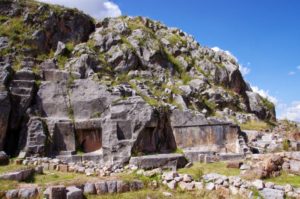 The Temple of the Moon is literally at the tip of the hill, away from the noise and movement of Cusco even if it is only an hour’s walk away. The temple contains a cave with a ceremonial altar, where the figures ofpumas, snakes and condors are carved. Its purpose is to revere fertility, so its caves were built to let in sunlight and moonlight on specific days, pointing to specific parts of the altars. The access to the temple is completely free. If you wish to visit this place,
The Temple of the Moon is literally at the tip of the hill, away from the noise and movement of Cusco even if it is only an hour’s walk away. The temple contains a cave with a ceremonial altar, where the figures ofpumas, snakes and condors are carved. Its purpose is to revere fertility, so its caves were built to let in sunlight and moonlight on specific days, pointing to specific parts of the altars. The access to the temple is completely free. If you wish to visit this place, 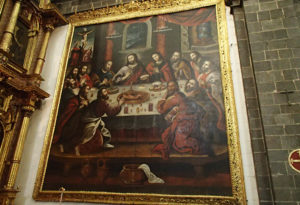 The cultural appropriation of certain beliefs, especially when it comes to religious works, gives a special flavor to an already known history. This is the case of the canvas of the Last Supper in the Cathedral of Cusco. We have the classic elements of the Last Supper, but clearly it seems that the feast was given in Cusco. In the painting you can see chili peppers, fruits, corn and the most important thing: a guinea pig, the most desirable rodent of the premises since pre-Hispanic times. The painting is attributed to Peruvian painter Marcos Zapata, who used to incorporate secrets like these into his works.
The cultural appropriation of certain beliefs, especially when it comes to religious works, gives a special flavor to an already known history. This is the case of the canvas of the Last Supper in the Cathedral of Cusco. We have the classic elements of the Last Supper, but clearly it seems that the feast was given in Cusco. In the painting you can see chili peppers, fruits, corn and the most important thing: a guinea pig, the most desirable rodent of the premises since pre-Hispanic times. The painting is attributed to Peruvian painter Marcos Zapata, who used to incorporate secrets like these into his works.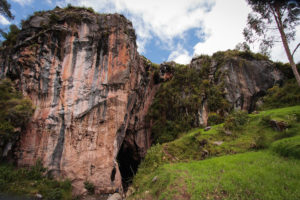 Behind Sacsayhuamán, one of the most important Inca archeological centers in the sector and part of our Cusco City Tour, is the Balcón del Diablo. A natural architectural heritage that the Incas took advantage of as a point of entry to the city of Cusco. It is a giant rock, which in the middle has a kind of window (or balcony) with a spectacular view of the river that runs below. In addition, you can cross the rock through the tunnel that is at the river level.
Behind Sacsayhuamán, one of the most important Inca archeological centers in the sector and part of our Cusco City Tour, is the Balcón del Diablo. A natural architectural heritage that the Incas took advantage of as a point of entry to the city of Cusco. It is a giant rock, which in the middle has a kind of window (or balcony) with a spectacular view of the river that runs below. In addition, you can cross the rock through the tunnel that is at the river level.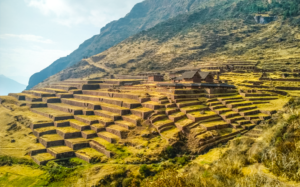 A perfect trek to do during the day, Huchuy Qosqo (Little Cusco in Quechua) is 3650 meters above sea level and offers incredible views of the Sacred Valley. In its time it was an important agricultural center for the production of corn, with perfect stone works called Collcas, to store and preserve food. There are no public roads that access it, but in Colibri Tour we have a trekking that connects Huchuy Qosco with Machu Picchu in two days.
A perfect trek to do during the day, Huchuy Qosqo (Little Cusco in Quechua) is 3650 meters above sea level and offers incredible views of the Sacred Valley. In its time it was an important agricultural center for the production of corn, with perfect stone works called Collcas, to store and preserve food. There are no public roads that access it, but in Colibri Tour we have a trekking that connects Huchuy Qosco with Machu Picchu in two days.  Waqrapukara is so unknown that it is not yet known whether it was a fortress, a sanctuary or an astronomical observatory. This monument is located at 4,300 meters above sea level in the Apurimac canyon, south of the city of Cusco. Its landscape is overwhelming, because it is surrounded by impressive platforms, squares and a giant monolith that contemplates the mountain landscape.
Waqrapukara is so unknown that it is not yet known whether it was a fortress, a sanctuary or an astronomical observatory. This monument is located at 4,300 meters above sea level in the Apurimac canyon, south of the city of Cusco. Its landscape is overwhelming, because it is surrounded by impressive platforms, squares and a giant monolith that contemplates the mountain landscape.